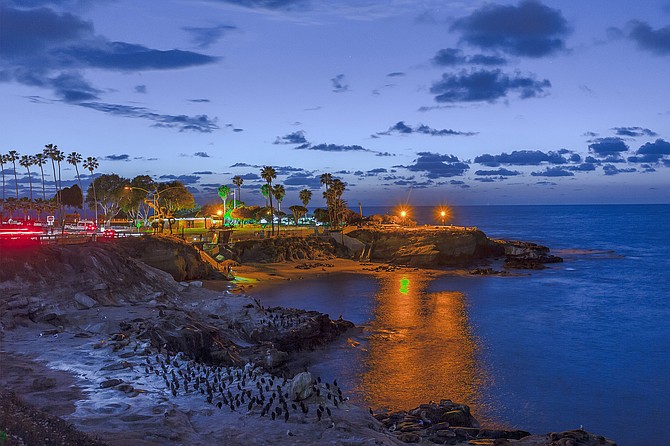 Facebook
Facebook
 X
X
 Instagram
Instagram
 TikTok
TikTok
 Youtube
Youtube

The Time of Sunset changes most rapidly this time of the year. This is mainly because the sun is swinging rapidly south along the ecliptic (its apparent path through the background stars). From the latitude of San Diego, the sun is now setting about 75 seconds earlier every day (equivalent to about nine minutes earlier per week), and its setting position along the horizon shifts southward about one half degree per day.

Neptune will be in opposition on Tuesday, September 19. That means that it will be at its closest point to Earth. As our planet passes between the Neptune and the Sun, Neptune will appear the brightest that we will see it. That being said, seen by the naked eye, Neptune is still five times fainter than the dimmest star. But if you have a telescope, this is your chance to see the Solar System’s most elusive planet, which will rise in the east and set in the west at sunrise, climbing to its highest point in the sky just after midnight. (The first quarter moon sets after midnight, so the sky will be darker.)

“Locals Summer” begins now. At last: the span of warm weather after Labor Day, when the kids are back in school, the days are still long, and the tourists are gone (for the most part). Spend an evening at the beach, or kayaking La Jolla Cove. This is your time to enjoy your town, San Diego locals.


The Time of Sunset changes most rapidly this time of the year. This is mainly because the sun is swinging rapidly south along the ecliptic (its apparent path through the background stars). From the latitude of San Diego, the sun is now setting about 75 seconds earlier every day (equivalent to about nine minutes earlier per week), and its setting position along the horizon shifts southward about one half degree per day.

Neptune will be in opposition on Tuesday, September 19. That means that it will be at its closest point to Earth. As our planet passes between the Neptune and the Sun, Neptune will appear the brightest that we will see it. That being said, seen by the naked eye, Neptune is still five times fainter than the dimmest star. But if you have a telescope, this is your chance to see the Solar System’s most elusive planet, which will rise in the east and set in the west at sunrise, climbing to its highest point in the sky just after midnight. (The first quarter moon sets after midnight, so the sky will be darker.)

“Locals Summer” begins now. At last: the span of warm weather after Labor Day, when the kids are back in school, the days are still long, and the tourists are gone (for the most part). Spend an evening at the beach, or kayaking La Jolla Cove. This is your time to enjoy your town, San Diego locals.
Comments